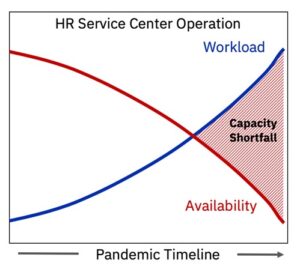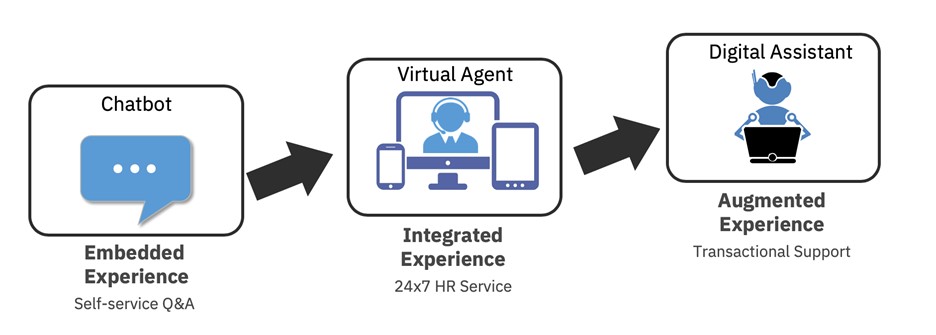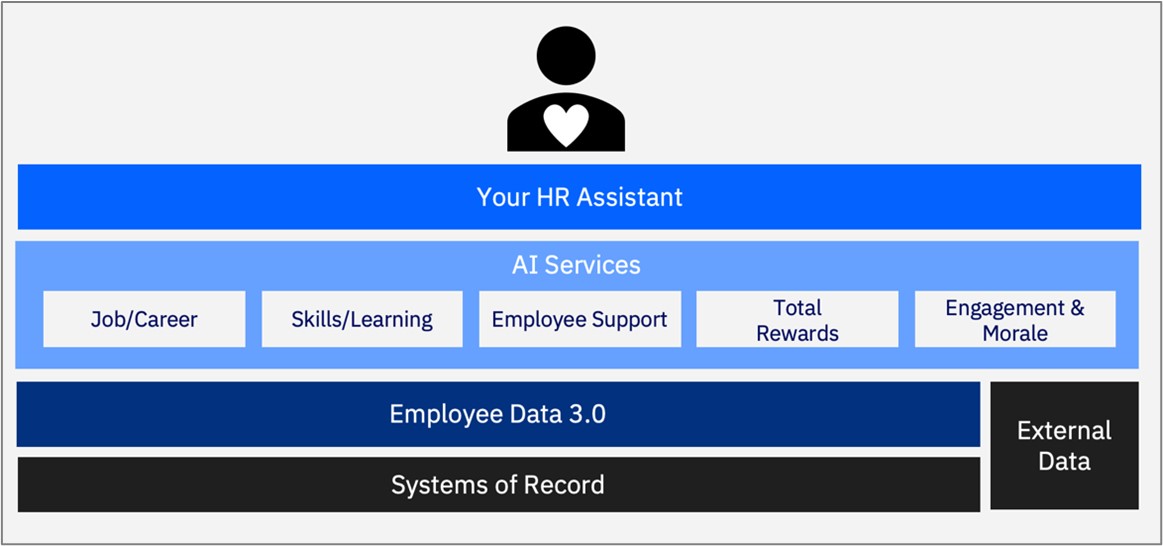The Perfect Storm
In March 2020, as companies implemented new working procedures or announced widespread furloughs, HR Service Centers were faced with an unprecedented situation. Call volumes had increased dramatically, and the types of calls were completely different from what the service center had experienced in the past. The scenarios employees needed help with were complicated – requiring more time to resolve, and from week-to-week, the answers were often changing. All of this added up to a significantly higher workload for the service center – sometimes 10x higher than normal.
At the same time, those same service centers were dealing with workforce challenges of their own. Getting agents set up to work from home took time. There were hardware and connectivity issues. People were getting sick, and in some cases, HR was forced to cut staff in response to budget pressures. It was the perfect storm – more calls coming in and fewer agents to take them (Figure 1). HR leaders had to react quickly to address the capacity shortfall and ensure that employees could get the information that they needed.

From Chatbot to Virtual Agent
For many, adding a chatbot was the perfect solution. A chatbot could be set up to specifically answer questions about Covid-19, offsetting the increased workload in the service center and giving employees a single 24×7 point of contact for information about the virus. It also enabled HR teams to easily update information as the situation changed. At IBM, we offered clients a Watson-based Covid “crisis assistant” that could be deployed in days. It answered questions about company policies related to the pandemic and incorporated information from national health organizations.
Prior to the pandemic, we were already seeing a shift in employee expectations. Most workers, accustomed to consumer-grade experiences, wanted the flexibility of mobile-ready, always-available access to enterprise services. Now that operations have settled into more of a steady state mode, HR service centers have the opportunity to address the broader scope of employee needs by expanding their Covid chatbots into HR virtual agents.
At IBM, we’ve implemented many conversational AI solutions for clients, and they all tend to follow a similar journey (Figure 2). Most start with a single-topic chatbot like the Covid crisis assistant – a solution that offers Q&A information with common answers for everyone. This enables the HR team to establish processes for managing content, capturing feedback and learning how to support conversational experiences. Next, they expand the chatbot into a virtual agent, adding additional topics and connecting it to the HRIS so that responses can be tailored based on employee information like location and worker type. The final stage is creating a true digital assistant, establishing additional system integrations to support common transactional requests, like updating personal data or requesting time off.

Principles of Success
Conversational support is one of the most popular use cases for HR leaders who are looking to implement AI, and it’s an area where the underlying technology is relatively mature. However, there’s much more to it than just working through the stages from chatbot to virtual agent to digital assistant. As with most enterprise solutions, there are also process and cultural factors that must be addressed in order to get the full benefits of the solution. Having assisted many clients in their employee care journeys, we’ve identified three key principles that ultimately determine the success of a conversational AI strategy (Figure 3).
- A motivated and inspired dialog team – that gives the chatbot its voice
- Human-centered experience design – focused on meeting user needs – not just implementing technology, and
- Agile & iterative solution development – working in short-cycle sprints and applying feedback to improve outcomes.

Motivated and Inspired Dialog Team
Many people have the mistaken impression that chatbots are naturally smart – that they pull their answers from a vast knowledge base and assemble them on the fly in response to user questions. In reality, HR subject matter experts (SMEs) play an essential role in building the responses that a chatbot relies on to answer questions. It’s a lot of work. To build a chatbot, SMEs first identify the questions that employees are likely to ask and then develop responses to those questions written in a “conversational” style – suitable for the back and forth exchange in chat. Once a chatbot is deployed, SMEs are then responsible for reviewing user feedback and determining how to apply that feedback to improve how it works. The most successful enterprise chatbots have a dialog team that understands their critical role and who are motivated to create a great employee experience.
EY’s Digital Talent team tasked a set of SMEs to develop the conversation design for their first HR chatbot (an onboarding assistant). Their mission was to enable a dialog that engaged college hires and addressed their unique needs. By deploying a solution focused on the most common new hire questions, EY’s chatbot was able to resolve over 60% of incoming queries. EY then repeated this success by enlisting additional SMEs as they expanded to other use cases.
Human-centric Experience Design
User-focused design thinking is relevant for any solution implemented in the enterprise, but it is particularly important for conversational AI. Rather than just treating it like a typical technology project, HR teams must approach the effort from the perspective of the employees being served. What are their needs? How are they best met? Human-centric design starts with developing personas that represent different user types, and then co-creating the solution with employees who represent those personas. Co-creation will identify and prioritize the variety of enterprise services that will benefit from a virtual agent experience. It will also identify situations where a human response is most appropriate — where the nature of the topic or scenario is such that the best experience will be one where a live service center agent helps the employee and provides that human touch. Human-centric design means you build your solution to account for all scenarios so that employees get the experiences that are most appropriate for their needs.
PayPal has adopted a user-centric mindset in their employee experience initiative, building an enterprise solution that combines all employee services in a single, intuitive interface. They co-created with employees from the outset and encouraged creativity in identifying new services that could fill gaps in the existing experience. An important design principle was making it easier to navigate the complexity of the enterprise. For example, when employees have an issue to be resolved, they simply use the virtual agent to open a ticket, and orchestration then routes it to the appropriate team in HR, IT or Facilities for resolution.
Agile, Iterative Solution Development
Virtual Agent solutions are like a blank canvas. What they do and how they work is shaped by the targeted experience. And when it comes to creating a great virtual agent experience, it’s impossible to know if you are getting it right until it’s actually being used by employees. Most successful conversational AI teams start small – identifying a use case with an important user-centric outcome and then co-creating with employees so that user input can guide the design. Then, they experiment. They deploy to a small group of users to learn from feedback and then go through the cycle again. By adopting this model of iteratively building the solution, HR teams stay attuned to employee needs and are able to quickly adjust their plans based on what they’ve learned.
Medtronic has adopted agile practices to build a virtual agent in their “HR Innovation Garage”. To facilitate digital transformation and drive a more customer-centric mindset, they applied the IBM Garage framework — a three-stage iterative model for rapidly exploring and scaling innovations:
- Co-Create — HR process owners join with IT to engage employees and develop ideas. The ideas are then evaluated to see how they could drive value for the enterprise and prioritized for further exploration.
- Co-Execute — Agile principles are applied to quickly develop a proof of concept that brings substance to the top ideas. Successive sprints apply feedback from HR customers until a minimum viable product (MVP) is ready for pilot deployment.
- Co-Operate — The MVP is scaled – adding users and functionality in phases and incorporating DevOps processes to facilitate an agile release cycle.
The Future of Personalized HR
Conversational AI is already transforming the way HR engages employees, and HR’s successful implement of Covid-19 chatbots has set a foundation for expansion. While the technology can seem intimidating, getting started is as simple as assembling a motivated team, engaging employees in co-creation and adopting an agile mindset for rapid innovation. As conversational AI capabilities continue to advance, the digital assistant will eventually manage the employee experience for all HR services, providing employees and managers with tailored information, transactional support and personalized recommendations across the employee lifecycle. (Figure 4).




